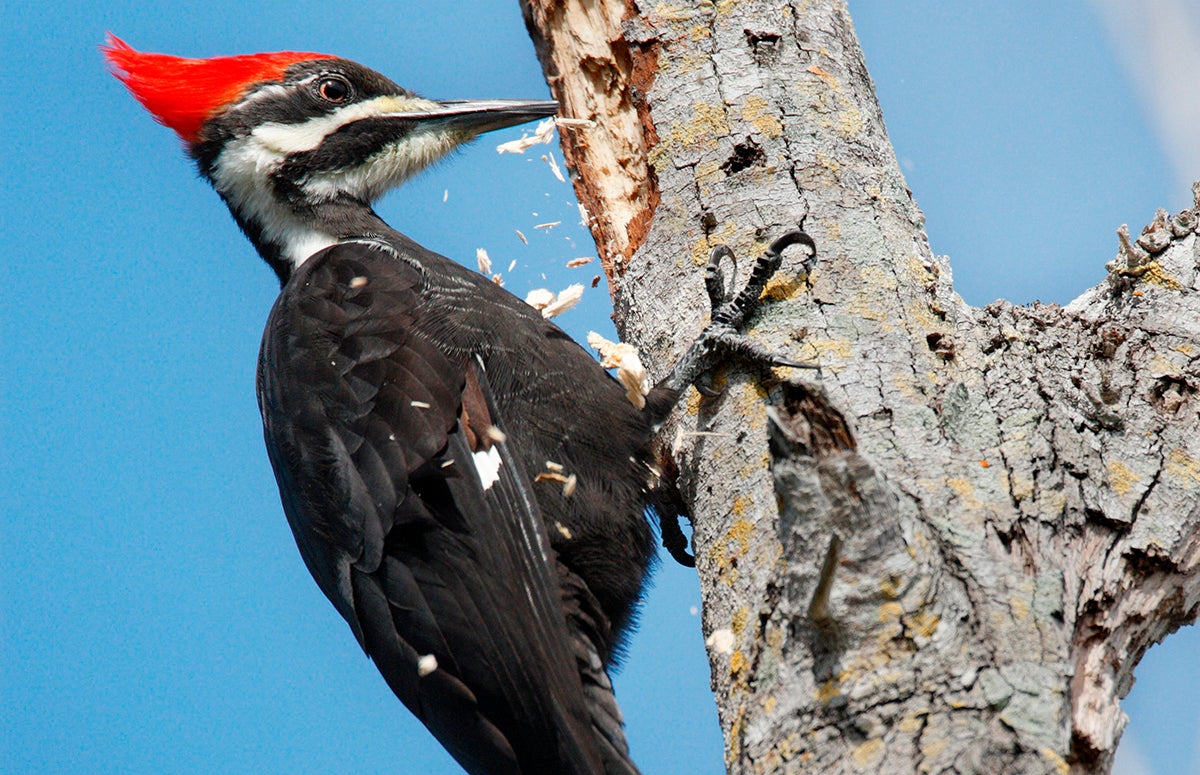Woodpeckers Unleashed: Exploring the Wonders of These Proficient Tree Climbers
Woodpeckers, with their unique markings and balanced drumming echoing through wooded areas, hold a special place in the bird world - Woodpeckers in Florida. As we delve right into the elaborate information of woodpeckers' nesting practices, feeding techniques, and the continuous preservation initiatives to safeguard these impressive birds, a much deeper recognition for their location in nature unravels.
Makeup and Adaptations
When analyzing the composition and adaptations of woodpeckers, one can observe exceptional functions that enable these birds to grow in their specialized ecological specific niche. Woodpeckers are outfitted with a collection of unique physiological characteristics that help them in their woodpecking habits. Among one of the most noticeable functions is their solid, chisel-like beak, which is specialized for exploration into wood to uncover insects or develop nesting cavities. This beak is supported by strong neck muscles and a highly developed head framework that functions as a shock absorber, permitting woodpeckers to repetitively eat trees without creating brain injury. Additionally, woodpeckers have zygodactyl feet, with two toes facing forward and two encountering backward, offering a firm grip on tree trunks while they search for food or drum for interaction.
Moreover, woodpeckers have a distinct tongue structure that is long, barbed, and sticky, allowing them to draw out insects from holes in timber. This customized adaptation enables woodpeckers to exploit a food source that is unattainable to lots of various other bird species. On the whole, the composition and adjustments of woodpeckers showcase the remarkable transformative options that have permitted these birds to grow in their arboreal habitat.
Drumming Actions
Having checked out the makeup and adjustments of woodpeckers, the focus currently changes to recognizing their drumming habits, a distinctive facet of their communication and territorial display screens. Drumming is an essential form of interaction among woodpeckers, offering numerous functions such as establishing areas, attracting companions, and signaling alarm. Each woodpecker types has a special drumming pattern that assists people acknowledge participants of their own types and differentiate them from competitors or killers.
Woodpeckers produce drumming noises by swiftly pecking on resonant surface areas such as dead trees, utility posts, and even metal things, creating a collection of balanced beats. The intensity and speed of drumming can differ based upon the purpose; for example, a fast drumming series may represent aggressiveness towards trespassers, while a slower and softer drumming pattern can suggest courtship (Woodpeckers in Florida). In addition, woodpeckers might adjust the frequency and duration of their drumming to communicate details messages efficiently
Nesting Routines
Discovering the nesting habits of woodpeckers reveals fascinating understandings right into their reproductive actions and environment choices. Woodpeckers are known for their unique nesting preferences, usually digging deep into cavities in trees to create sheltered spaces for raising their young. These cavities offer not just as a nesting website however additionally as a secure refuge from predators and inclement weather.
Woodpeckers exhibit a high level of integrity to their nesting sites, frequently going back to the same location year after year. This find this behavior highlights the value of appropriate habitat schedule for their reproductive success. The selection of a nesting website is crucial for woodpeckers, with factors such as tree varieties, elevation, and degeneration phase playing substantial functions in their decision-making process.
Interestingly, some woodpecker species are known to excavate multiple dental caries within their region, giving themselves with alternate nesting choices. This method may act as a kind of insurance policy versus prospective risks or disruptions to their main nesting site.

Feeding Strategies
One of the most unique feeding actions of woodpeckers is drumming, which includes quick pecking on trees to discover bugs underneath the bark. Woodpeckers are also understood to dig deep into tooth cavities in trees to accessibility covert insect larvae or sap. Some varieties, like the acorn woodpecker, store nuts in specifically developed holes called granaries.
Conservation Initiatives
In the middle of the elaborate feeding techniques exhibited by woodpeckers, the preservation efforts focused on securing these fascinating birds play an essential duty in maintaining their habitats and populaces. Woodpeckers deal with numerous dangers to their survival, including habitat loss as a result of deforestation, environment modification modifying their ecosystems, and crashes with manufactured frameworks such as structures and cars - Woodpeckers in Florida. Conservationists are proactively working to address these challenges and make certain the lasting well-being of woodpecker species

Education and public understanding campaigns are additionally essential parts you can try these out of woodpecker preservation initiatives. By increasing recognition about the importance of these birds in maintaining healthy and balanced woodland ecological communities, conservationists can gather support for environment conservation campaigns and advertise accountable land monitoring practices. Through joint initiatives in between researchers, policymakers, and regional neighborhoods, we can interact to protect a future where woodpeckers prosper in their natural habitats.
Verdict
